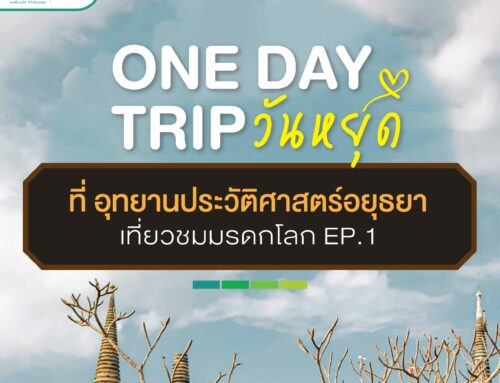When the rainy season comes, on mountain top of Chaiyaphum province will be full of Siam Tulip, the queen of the mountain of flowers that bloom only once a year. Siam Tulip viewing were popular among tourists and it eventually became a provincial festival attracted both domestic and foreign tourists generated substantial income for the community.
‘Siam Tulip’ is a plant in the same family as ‘ginger and galangal’ which is characterized by accumulating food in the underground during dry season and gradually growing and blooming during rainy season. It can be found everywhere in the sparse forest. In the north and northeast regions of Thailand, local people commonly eat its bud with chili paste. Same as ginger and galangal, it possess carminative effects. Local people use it to breaks up the gas trapped in the stomach and intestines.
Siam Tulip that we see on Pa Hin Ngam are nature grown which is a different species with Siam Tulip that local people eat. They are not strong enough to withstand human tread. There is a high risk that the flowers will not reproduce after being trod.
Siam Tulip Festival usually hold during June to August every year, with two important places to see Siam Tulip, namely Pa Hin Ngam National Park, Thepsathit District and Sai Thong National Park, Nong Bua Rawe District. With the overwhelming number of tourists each year, park officials have to find measures to cope with this problem. The author would like to raise Pa Hin Ngam National Park as an example for tourist management system which is considered very well done.

- People management
With a large number of visitors throughout the festival, Pa Hin Ngam National Park therefore needs to manage the method of entry from the beginning. Every visitors, whether or not bringing a private car, must use the park’s internal tram shuttle service only, which was prepared at the entrance of the park. And there are regular parking spots for internal tram shuttle at various important points of the park. It takes only a few minutes waiting for each tram shuttle service. The park’s tram not only serves to send and receive passengers, but also acts as a tour guide. There are volunteer local guides who will tell the story of the park while you travel. With the management of people from start, the park can be able to control the amount of traffic, density and reduce congestion caused by private cars.
- wooden walkway was built along the path in the tourist attraction
As we know, wild Siam Tulip are fragile. To minimize disturbance to nature, Pa Hin Ngam National Park therefore made a wooden walkway raised from the ground by about 1 meter. Tourists, whether children or adults can easily walk on it without having to walk on a hard and slippery path since Siam Tulip grows well on damp areas. And it provides no risk about visitors stepping on Siam Tulip. The walkway is 2 kilometers long and wide enough to walk past each other. The park also makes a stopover for tourists to take pictures with Siam Tulip closely.
- “Put waste in the right place”
What impressed the author the most was cleanliness, whether in the park itself or at the souvenir shop, they are very clean when compared to the number of tourists from all over the world that come in here. Unlike some tourist attractions, merchants are not allowed to sell in the park. And, there are trash cans provided everywhere in the park.
In fact, this kind of management is not something new. But in Thailand, tourist attractions management is often ignored by entrepreneurs. If thinking back a bit, as long as we treat those things well, the natural beauty that we maintain will reward us sustainably. Tourists themselves must also take care of tourist attractions they visit, for those beautiful places to be with us for a long time.
Getting There
No airlines that offer flight to Chaiyaphum yet. To get there, you are recommended to drive a private car or travel by public transportation vehicles as follows
- Vans: Thep Sathit Tour, departing every hour, Chatuchak-Rangsit-Saraburi-Chai Badan, Lam Sonthi, Thepsathit route. Service fee is 200 baht per person. For more information, please contact 08 9946 8279
- Bus: Phetprasert Tour. Bus number 9903. Bangkok – Nong Bua Rawe – Chaiyaphum route. For more information, please contact 0 2936 1977






Leave A Comment